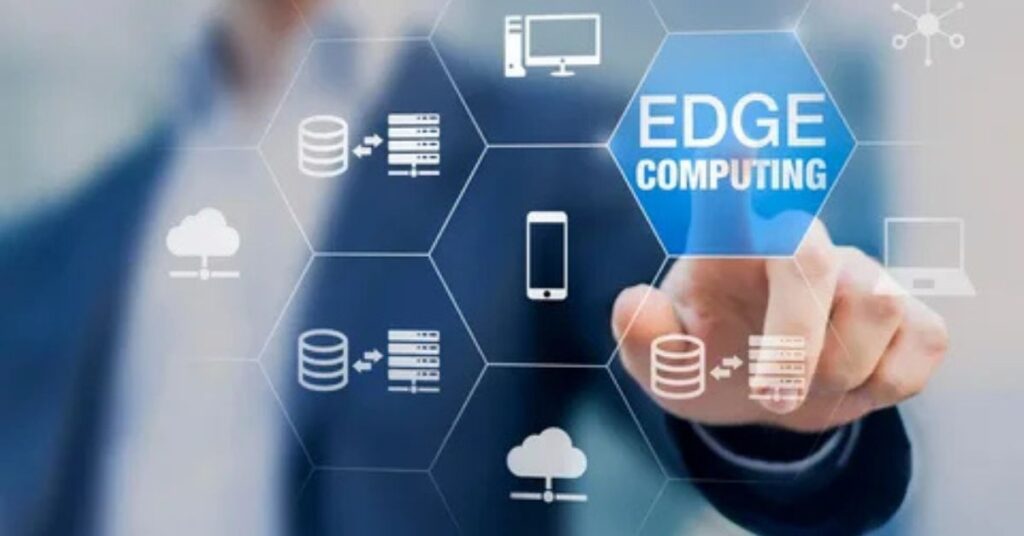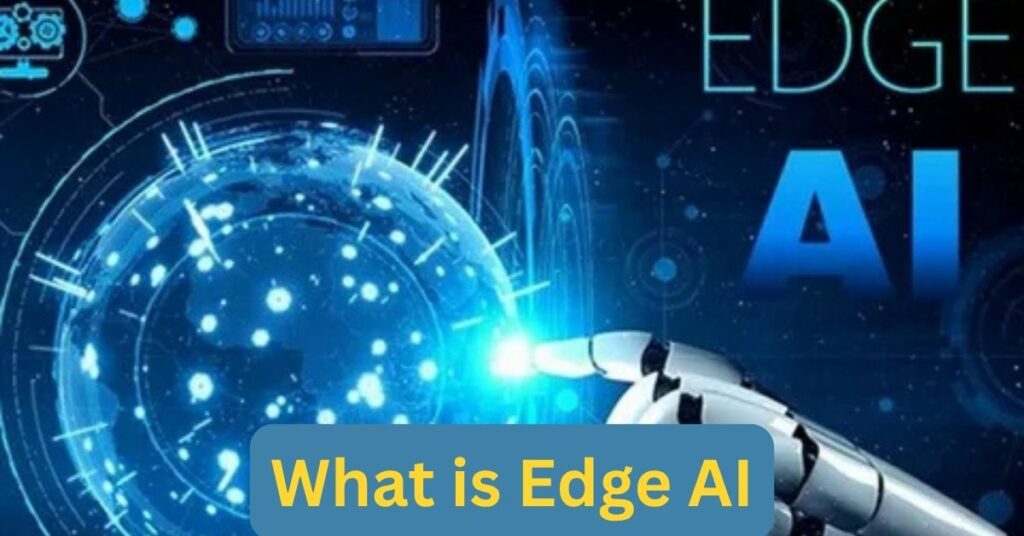What would it be like to have a phone, a car or a smartwatch that could think and act as soon as you tell it to do something? No need to connect to the internet. It is the magic of Edge AI. This guide will not only define what Edge AI is, how it works in 2025, and where it is producing a huge impact, but also break it down to language anyone in sixth grade could understand.
- What is Edge AI?
- How Does Edge AI Work in 2025?
- Edge AI Devices in Daily Life
- Edge AI Chat: Talk Smarter, Faster
- Edge AI Website Integrations
- 7 Powerful Edge AI Applications in 2025
- Edge AI Examples You Can Relate To
- Edge AI Copilot: Your Smart Helper
- Edge AI Use Cases in Healthcare
- Edge AI in Banking: Security Meets Speed
- When to Use a Graph Database vs Relational for Edge AI
- Edge AI Google Initiatives
- Best Edge AI Devices of 2025
- Why You Should Care About Edge AI
- Conclusion:
- FAQ's
What is Edge AI?
Edge Artificial Intelligence, or EDGE AI, is abbreviated as Edge AI. It is the deployment of AI algorithms directly on such devices as smart phones, cameras, vehicles and even medical equipment- rather than feeding data to distant servers as is the case with the old cloud computing.
Consider Edge AI as a system that makes your devices smarter since they can think and act locally, quickly, and without requiring an internet connection at all times.
Anecdote: Do you remember when your voice assistant told you that she (it is a female voice assistant) cannot connect to the internet? That would not be the case with Edge AI, as this can be deployed even when offline.
How Does Edge AI Work in 2025?
By 2025, Edge AI uses compact but very capable chips, such as NVIDIA Jetson or Apple Neural Engines, within devices. These chips are able to:
- Obtain inputs of sensor sensors/cameras.
- Analyse the information on the machine itself.
- Take on-time decisions without querying a cloud server.
This makes it all quicker, safer and more confidential.
Learn more about Edge AI hardware like NVIDIA Jetson
Edge AI Devices in Daily Life
In 2025, it’s already unspectacular: You will have Edge AI devices all around you.
- Smartphones are able to recognise faces at a snap.
- Real-time heart health analysis smartwatches.
- Security cameras which can detect intruders before setting off an alarm.
- Cars that drive themselves, making timers on split-second decisions.
These things do not need to talk to servers to compute: they compute on the spot.
Edge AI Chat: Talk Smarter, Faster
Edge AI chat tools are the next big thing. Imagine talking to your AI assistant even without an internet connection. In 2025, smart speakers and chatbots run on Edge AI, making conversations:
- Instant (no lag!)
- More secure (data stays local)
- Always available (even in no-WiFi zones)
Examples include Samsung’s on-device Bixby and Google’s offline voice typing.
Explore how on-device AI works in Samsung phones
Edge AI Website Integrations

The contemporary Edge AI websites are turning to incorporate on-device smarts to improve on pace and privacy. For example:
- Healthcare portals that examine the symptoms locally.
- Websites which apply AI to recommend products in real-time.
It implies the loading speeds and an enhanced user experience, even in the low coverage zones.
7 Powerful Edge AI Applications in 2025
Seven Applications of Edge AI Transforming Industries include:
- Healthcare: Medical devices that can diagnose diseases in real-time.
- Retail: mirrors equipped with stores that provide outfit recommendations.
- Manufacturing: Machine supply indicates breakdowns in advance.
- Transportation: self-driving cars, which will make safe decisions in milliseconds.
- Agriculture: At the farm level, drones provide assistance in the detection of crop diseases in real time.
- Smart Home: Appliances with auto-adjustment.
- Security: Cameras identify the threats without a cloud time lag.
Edge AI Examples You Can Relate To
Real-World Edge AI Examples: Let us examine Edge AI examples:
- The Tesla automobiles make decisions on the road by using Edge AI hardware.
- Nest cameras recognise the faces and motion, but do not transfer the information to the cloud.
- Oura Ring analyses your health data in the device before syncing.
All these devices have been utilising Edge AI to serve smarter and faster outcomes with stronger privacy.
Edge AI Copilot: Your Smart Helper
Today, in the year 2025, we find ourselves with Edge-AI Copilots– AI assistants that:
- Assistant drivers by road analyses.
- Summarise books without the internet to help students.
- Assist professionals with code or email that is written on the fly.
All three major players, Microsoft, Apple, and Google, are already in a race to the launch of on-device copilots, to make your life easier even in aeroplane mode!
See Microsoft’s Copilot innovations
Edge AI Use Cases in Healthcare
The Graph Databases healthcare and Edge AI applications are intertwined. In hospitals:
- The AI cameras monitor the breathing of patients.
- Mobile gadgets check vitals at all times.
- Robots are used to aid surgery in real-time vision.
That will imply improved care, more rapid diagnosis, and less burden on physicians.
Discover how Edge AI is transforming medical tech
Edge AI in Banking: Security Meets Speed
Banking uses of graph databases also combine with Edge AI. The banks have now started using:
- Face recognition Smart ATMs.
- Offline fraud detection system.
- Logins that only use voice recognition and do not need cloud check-ins.
Edge AI guarantees the availability of real-time fraud warnings and data privacy, which are major aspects of finance.
When to Use a Graph Database vs Relational for Edge AI
When it comes to highly related data, such as friend networks or the supply chain, a graph database is needed.
When your data is rather strict and table-like, such as billing systems, use relational databases.
Feeling curious?
Edge AI Projects You Can Try in 2025
To experiment with Edge AI projects, you do not have to be a tech genius. Easy starters are these:
- Create a face recognition system based on Raspberry Pi.
- Develop a plant health monitor through an artificial intelligence-driven garden sensor.
- Jetson Nano program a motion-sensor alarm.
Such resources as Hackster.io and Edge Impulse provide novice guides.
Edge AI Google Initiatives
The Edge AI revolution is headed by Google. Using such tools as:
- Developer hardware Coral AI
- TensorFlow Lite On-device machine learning
- Edge AI running Offline Google Translate
The innovations of Google render AI so accessible that it can be reached despite being deprived of access to the clouds.
Best Edge AI Devices of 2025
Some of the best devices that use Edge AI are listed below:
- Apple Watch X: The next generation of health monitors.
- Tesla FSD Chip: Full self-driving with Edge AI.
- DJI Mavic Air 3 is an AI-powered drone that uses on-device obstacle avoidance.
These gadgets are fast, secure, and with smarts, right at the edge.
Why You Should Care About Edge AI
Edge AI is not another buzzword technology. It is previously transforming the sphere of living, labour and recreation. No matter your level of interest in technology, whether you own a small business or enjoy learning, grasping Edge AI will enable you to:
- Be more intelligent with technology
- Use safer and quicker gadgets
- Be at the top of the digital trends
Conclusion:
To sum up, Edge AI is all about bringing the capability to make smart decisions closer to the point when the data is generated, to your devices, not out to cloud servers that are miles away.
Nowadays, the technology can be found even in everyday life and helps power self-driving cars and drones, offer real-time health monitoring in hospital settings or enable smart assistants in your own home by 2025. The most significant thing about Edge AI is that it enables real-time information processing, provides more privacy due to data being localised, and decreases the need to switch to the internet. With greater entry into this age of AI, Edge AI is no longer the kind of idea that can only be seen as something that will be in the future; however, at the moment, it is the reason making our technology more efficient, secure and better. The moment has come to investigate how Edge AI applications may change your online experience and ready you for an intelligent tomorrow.
FAQ’s
What is Edge AI?
Edge AI is a synergy between artificial intelligence (AI) and edge computing. Practically, it is simply executing AI programs on device level; i.e., not sending data to the cloud but rather using it in smartphones, sensors, cameras, or even drones. This gives the gadget the capacity to make decisions on the go, including the case where there is no internet connection. Another example of such a use is a security camera that employs Edge AI to recognise any suspicious activity and report on it in real-time without any reliance on the cloud.
What is the difference between AI and Edge AI?
The principal distinction is in the locale where the AI processing takes place:
The normal state of traditional AI is that they are run in massive data centres or cloud disciplines. This involves transmission of the data between your gadget and the cloud.
However, Edge AI does the same thing, but the local, off-device data processing is done on your device or near it.
That is why, although they are both forms of AI, Edge AI is quite a bit faster, consumes less of your data bandwidth, and leaves your data more confidential since it does not necessarily transmit it all over the internet. This is of particular essence to time-dependent ones, such as self-driving a car or distant surgery.
What is Microsoft Edge AI?
Microsoft Edge AI is the term used by Microsoft to describe the set of tools and platforms which enable AI to execute on edge devices, i.e. especially by running Azure AI services on Azure IoT Edge.
Companies can:
Run AI on IoT.
Take advantage of such services as Azure Percept that make it easier to create and distribute edge AI solutions.
Decrease latency, enhance privacy, and make real-time workloads.
Consider it as one of the methods that Microsoft is providing developers and businesses with the opportunity to equip them with strong tools in making the smart AI processing near where there is action.

